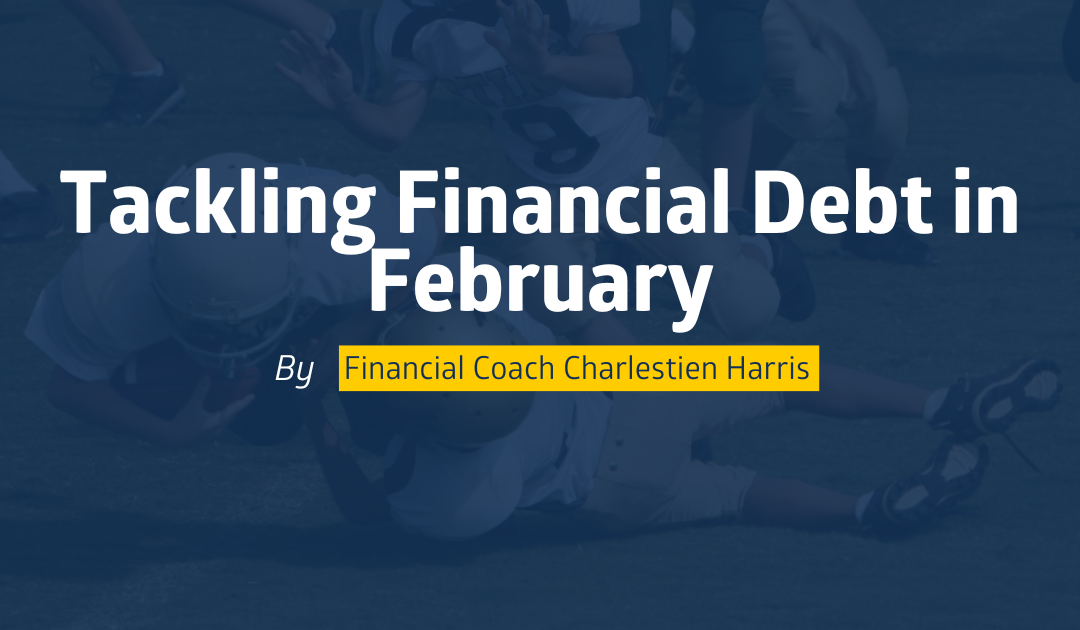By: Charlestien Harris
I know we are only two months into the year, but February is a fabulous time to start working on paying down your current debt. Statistics reported by Experian indicate that the average American has a debt amount of $96,371. That can be quite alarming, especially if the amount of discretionary income has been reduced and you have relied on credit to get you through the “rough spots” when it comes to taking care of your finances. I do want you to know there is a method to the madness that can sometimes overwhelm you if you don’t have a plan in place to tackle that mounting debt.
Here are a few suggestions to help you get your debt under control, or at least be able to manage it efficiently.
- Make a list of all of your debt.
This may sound simple, but you’d be surprised at the number of people that don’t know the total amount of debt they are in. In order to get your debt under control, you must know how much you owe to your creditors, and friends and family, too. Take inventory on all debt accounts to determine how much you owe in total, and list out each account, including total owed and interest rate. Write it down! This is very important. If you don’t write it down, we can tend to revert back to the old adage – out of sight, out of mind. - Separate and rank your debt by payment method.
This step involves making a personal decision about which way is the best way for you to tackle your debt. The two most familiar ways are the Avalanche and Snowball methods. The Avalanche Method requires you to rank your debt in order by starting with the highest interest rate first. If you choose to use this method, it will take a little longer to pay off your debt but it will save you from paying that extra interest in the long run. This method allows you to concentrate more on the larger debt amounts. The Snowball Method involves just the opposite – you would start with the smallest amount of debt first, and then move on to the next amount until you have the larger debt at the bottom of the list. Whichever method you choose, they both will get you down the path to eliminating your debt! - Consider figuring your debt-to-income ratio.
This may be something that you have not even thought of, but it plays a big part in the financial arena where credit decisions are made every day based on your DTI – debt-to-income ratio – which is the percentage of your gross monthly income that is used to pay your monthly debt and which can determine your borrowing risk. This figure will help to see whether or not you are living within your means. To calculate your DTI ratio, use the following equation: (total monthly debt payments ÷ monthly gross income) ✕ 100 = DTI%. Financial professionals suggest that you keep your DTI around 35 percent or less. This will help you to see how much of your income is actually going towards paying down your debt. The other step to take is to stop adding to the debt you already have. - Try setting up automatic payments for your debt.
One in four adults is behind in paying their bills, so you are not alone! According to the credit bureaus, 71 million Americans have debt in collections reported on their credit report. One of the most common reasons your debt amount seems to grow is because of late or missed payments. Missed payments can lead to adverse actions by your creditor such as delinquent or negative credit bureau reporting, charge-offs, foreclosure, or the closing of the account entirely. To avoid these negative actions, set up an auto-pay to ensure you don’t miss a payment on your current debt. - Challenge yourself!
Try to find at least three ways to cut your spending. Getting a handle on your spending can help you to have more money available to pay towards that debt-elimination plan you developed. This move will have to be a personal decision. You know your spending habits much better than I do, but if you need some hints, take a look at eating out, paid subscriptions, gourmet coffee purchases, nails and hair, etc. I hope you get the picture. (Not judging, just suggesting with a smile!) That extra money you add to your minimum payment will actually help you pay off your debt more quickly. - Perform a debt check-up.
This is an essential part of your physical health routine, so why not make these actions an essential part of your financial routine? At the end of every month you should perform a debt checkup to see how much progress you have made and how much debt you have actually paid off. How will you know if you have reached your goal if you don’t track your progress? There is an end in sight. Learn to give yourself a pat on the back for every amount of debt you have paid off so far. Celebrating that accomplishment can give you the motivation you need to keep going.
Having a plan in place can give you a sense of control. It can also help reduce the amount of stress you live under because you are constantly worrying about the bills you have to pay. Getting out of debt takes a lot of self-discipline, but you can do it! You can solve most of your debt issues in two to three years if you are patient, consistent, and willing to stick with the plan you developed.
For more information on this and other financial topics, visit www.banksouthern.com/blog, email me at Charlestien.Harris@banksouthern.com, or call me at 662-624-5776.
Until next week – stay financially fit!

